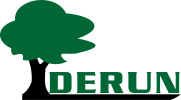Views: 0 Author: Site Editor Publish Time: 2021-10-19 Origin: Site











Raw material selection
In principle, all coal can be produced into activated carbon. However, the quality of activated carbon produced by different coal quality is very different. In order to better adapt to the market and make reasonable use of resources, the raw materials for the production of domestic coal-based activated carbon are mainly weak caking properties in Datong, Shanxi. Bituminous coal and Taixi anthracite in Ningxia.
In addition, Xinjiang bituminous coal is also suitable for making activated carbon. In recent years, under the influence of coal seam development and economic development in Xinjiang, more and more manufacturers use Xinjiang bituminous coal to produce activated carbon. In addition, some enterprises in Shenmu, Shaanxi Province also use local bituminous coal to produce activated carbon, but the adsorption value of activated carbon is generally low, and the adsorption value of iodine is mainly 400-700 mg/g (National Standard 87).
Carbonization activation section
"Activated carbon is a carbonaceous adsorbent after carbonization and activation of carbonaceous materials." According to the definition of this sentence, it can be seen that there are two necessary stages for the production of activated carbon, which are carbonization and activation.
Carbonization is one of the main heat treatment processes in the manufacturing process of activated carbon. The commonly used equipment mainly includes fluidized furnace, rotary furnace and vertical carbonization furnace.
Coal-based activated carbon usually carbonizes at a temperature of 350-600°C. In the carbonization process, most of the non-carbon elements—hydrogen and oxygen are firstly eliminated in the form of gas due to the pyrolysis of the raw material, excluding the volatile matter and moisture in the raw material, and the released elemental carbon atoms are combined into what is known as the basic graphite microstructure. The ordered crystallization products of the crystals make the carbon particles form preliminary pores and have the structure of the original form of activated carbon. After the raw material is carbonized, we call it carbonized material. The carbonized material already has a certain adsorption capacity, but the adsorption capacity is extremely low. After testing, the iodine adsorption value of the general carbonized material is only about 200mg/g.
The activation method is divided into physical activation method (also known as gas activation method) and chemical activation method according to different activators.
The commonly used activation method for coal-based activated carbon is the physical activation method, using water vapor, flue gas (a mixture of water vapor, CO2, N2, etc.), CO2 or air as the activation gas, and carbonization at a high temperature of 800-1000 ° C Activated by material contact (flue gas is most commonly used in the actual production process).
The activation process achieves the purpose of pore creation through three stages of opening the original closed pores, expanding the original pores and forming new pores. The activation is mainly through the activation reaction of the activation furnace equipment to create pores. The current mainstream includes Sleep furnace (SLEP), Scott furnace (STK), rake furnace, and rotary furnace. Currently, Sleep furnace is the most used gas in China. Activation furnace type.
Finished product section
The finished product section is mainly made into products with different particle sizes according to the application needs. For granular carbon, there are mainly three processes: crushing, screening and packaging.
The crushing equipment usually adopts a double-roller crusher. By adjusting the gap between the two rollers, the particle size of the product is controlled to increase the yield of qualified particle size screening.
Screening equipment usually uses a vibrating screen to screen the crushed material into three types: larger particle size, qualified particle size and smaller particle size. In the actual production process, multi-layer screens are often added to the vibrating screen to screen out products within several particle sizes, and finally the products with qualified particle sizes are packaged and sold. In industrial applications, 500kg/bag and 25kg/bag are usually used for packaging. In addition, in the production process, stone removers and iron removers are also used for special-purpose products to reduce the ash content of the products.
For powdered activated carbon, mainly through two processes of grinding and packaging. Grinding is now basically produced in most factories using Raymond mill equipment. By adjusting the analyzer of the mill, the finished powder carbon with a particle size of 200 mesh and 325 mesh can be produced.
Deep engineering section
For some special-purpose products, the finished carbon will be further processed by pickling, alkali washing, water washing and so on.
Among them, the purpose of pickling is mainly to reduce the ash content of activated carbon and avoid secondary pollution caused by activated carbon during use, so that it can be better used in food or other industries. There are also some application fields that require activated carbon impregnation to achieve better adsorption.
Pretreatment section
The several sections described above are general sections for the production of coal-based activated carbon, but in the process of producing briquetted activated carbon and columnar activated carbon, it is necessary to go through a unique section for pretreatment before carbonization and activation.
The production of briquette crushed charcoal requires coal blending, milling, kneading, extrusion molding, crushing, and screening into qualified particle sizes before carbonization and activation. The pretreatment stage of columnar activated carbon is similar to that of briquette activated carbon, the main difference is that the extrusion method is different. The briquette activated carbon is pressed into blocks, while the columnar activated carbon is mainly extruded into cylindrical carbon strips.
Hot tags: process of activated carbon, china, bulk, buy, cheap, manufacturers, factory, suppliers, free sample, quotation
What Are The Differences Between Impregnated Activated Carbon And Ordinary Activated Carbon?
Application of coal-based activated carbon in environmental protection field
The Principle And Effect of Activated Carbon Adsorption of Formaldehyde
Application of coal-based activated carbon in flue gas desulfurization and denitrification
